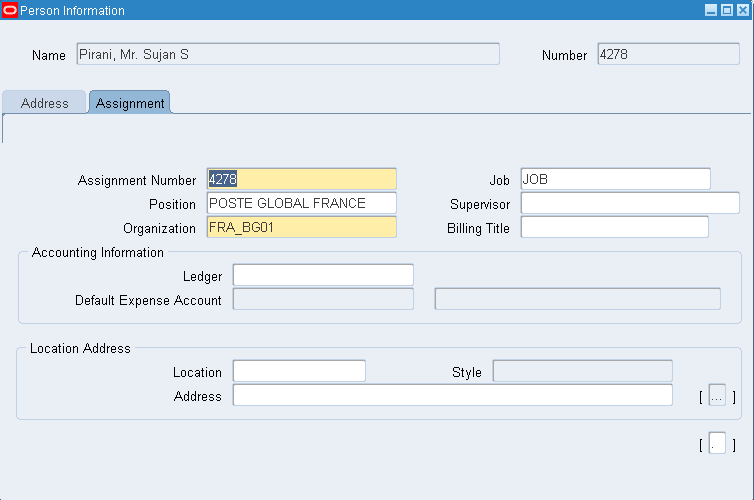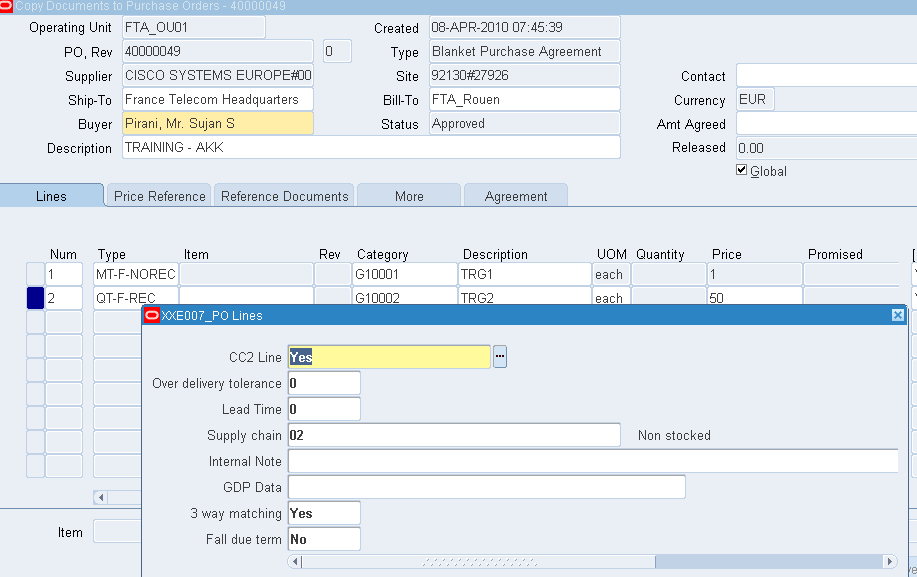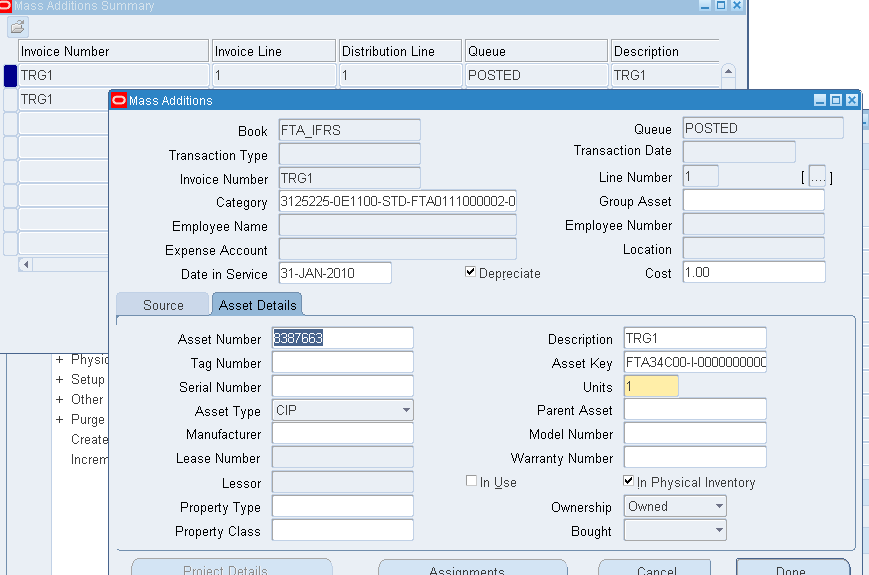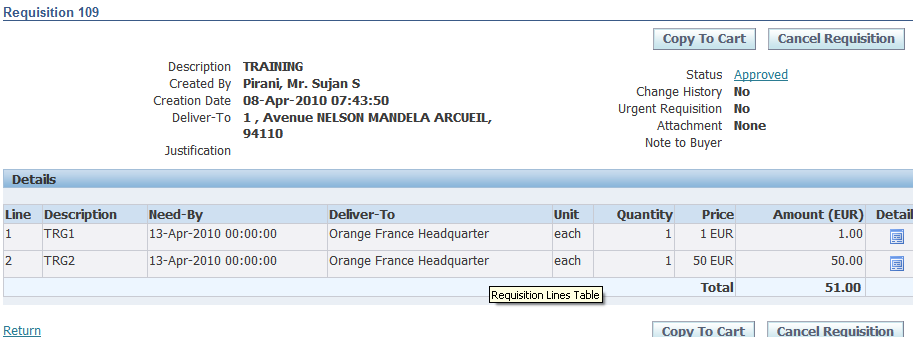The UTL_SMTP package was introduced in Oracle 8i and can be used to send emails from PL/SQL.
Simple Emails
In its simplest form a single string or variable can be sent as the message body using the following procedure. In this case we have not included any header information or subject line in the message, so it is not very useful, but it is small.
CREATE OR REPLACE PROCEDURE send_mail (p_to IN VARCHAR2,
p_from IN VARCHAR2,
p_message IN VARCHAR2,
p_smtp_host IN VARCHAR2,
p_smtp_port IN NUMBER DEFAULT 25)
AS
l_mail_conn UTL_SMTP.connection;
BEGIN
l_mail_conn := UTL_SMTP.open_connection(p_smtp_host, p_smtp_port);
UTL_SMTP.helo(l_mail_conn, p_smtp_host);
UTL_SMTP.mail(l_mail_conn, p_from);
UTL_SMTP.rcpt(l_mail_conn, p_to);
UTL_SMTP.data(l_mail_conn, p_message || UTL_TCP.crlf || UTL_TCP.crlf);
UTL_SMTP.quit(l_mail_conn);
END;
/
The code below shows how the procedure is called.
BEGIN
send_mail(p_to => ‘me@mycompany.com’,
p_from => ‘admin@mycompany.com’,
p_message => ‘This is a test message.’,
p_smtp_host => ‘smtp.mycompany.com’);
END;
/
Multi-Line Emails
Multi-line messages can be written by expanding the UTL_SMTP.DATA command using the UTL_SMTP.WRITE_DATA command as follows. This is a better method to use as the total message size is no longer constrained by the 32K limit on a VARCHAR2 variable. In the following example the header information has been included in the message also.
CREATE OR REPLACE PROCEDURE send_mail (p_to IN VARCHAR2,
p_from IN VARCHAR2,
p_subject IN VARCHAR2,
p_message IN VARCHAR2,
p_smtp_host IN VARCHAR2,
p_smtp_port IN NUMBER DEFAULT 25)
AS
l_mail_conn UTL_SMTP.connection;
BEGIN
l_mail_conn := UTL_SMTP.open_connection(p_smtp_host, p_smtp_port);
UTL_SMTP.helo(l_mail_conn, p_smtp_host);
UTL_SMTP.mail(l_mail_conn, p_from);
UTL_SMTP.rcpt(l_mail_conn, p_to);
UTL_SMTP.open_data(l_mail_conn);
UTL_SMTP.write_data(l_mail_conn, ‘Date: ‘ || TO_CHAR(SYSDATE, ‘DD-MON-YYYY HH24:MI:SS’) || UTL_TCP.crlf);
UTL_SMTP.write_data(l_mail_conn, ‘To: ‘ || p_to || UTL_TCP.crlf);
UTL_SMTP.write_data(l_mail_conn, ‘From: ‘ || p_from || UTL_TCP.crlf);
UTL_SMTP.write_data(l_mail_conn, ‘Subject: ‘ || p_subject || UTL_TCP.crlf);
UTL_SMTP.write_data(l_mail_conn, ‘Reply-To: ‘ || p_from || UTL_TCP.crlf || UTL_TCP.crlf);
UTL_SMTP.write_data(l_mail_conn, p_message || UTL_TCP.crlf || UTL_TCP.crlf);
UTL_SMTP.close_data(l_mail_conn);
UTL_SMTP.quit(l_mail_conn);
END;
/
The code below shows how the procedure is called.
BEGIN
send_mail(p_to => ‘me@mycompany.com’,
p_from => ‘admin@mycompany.com’,
p_subject => ‘Test Message’,
p_message => ‘This is a test message.’,
p_smtp_host => ‘smtp.mycompany.com’);
END;
/
HTML Emails
The following procedure builds on the previous version, allowing it include plain text and/or HTML versions of the email. The format of the message is explained here.
CREATE OR REPLACE PROCEDURE send_mail (p_to IN VARCHAR2,
p_from IN VARCHAR2,
p_subject IN VARCHAR2,
p_text_msg IN VARCHAR2 DEFAULT NULL,
p_html_msg IN VARCHAR2 DEFAULT NULL,
p_smtp_host IN VARCHAR2,
p_smtp_port IN NUMBER DEFAULT 25)
AS
l_mail_conn UTL_SMTP.connection;
l_boundary VARCHAR2(50) := ‘—-=*#abc1234321cba#*=’;
BEGIN
l_mail_conn := UTL_SMTP.open_connection(p_smtp_host, p_smtp_port);
UTL_SMTP.helo(l_mail_conn, p_smtp_host);
UTL_SMTP.mail(l_mail_conn, p_from);
UTL_SMTP.rcpt(l_mail_conn, p_to);
UTL_SMTP.open_data(l_mail_conn);
UTL_SMTP.write_data(l_mail_conn, ‘Date: ‘ || TO_CHAR(SYSDATE, ‘DD-MON-YYYY HH24:MI:SS’) || UTL_TCP.crlf);
UTL_SMTP.write_data(l_mail_conn, ‘To: ‘ || p_to || UTL_TCP.crlf);
UTL_SMTP.write_data(l_mail_conn, ‘From: ‘ || p_from || UTL_TCP.crlf);
UTL_SMTP.write_data(l_mail_conn, ‘Subject: ‘ || p_subject || UTL_TCP.crlf);
UTL_SMTP.write_data(l_mail_conn, ‘Reply-To: ‘ || p_from || UTL_TCP.crlf);
UTL_SMTP.write_data(l_mail_conn, ‘MIME-Version: 1.0′ || UTL_TCP.crlf);
UTL_SMTP.write_data(l_mail_conn, ‘Content-Type: multipart/alternative; boundary=”‘ || l_boundary || ‘”‘ || UTL_TCP.crlf || UTL_TCP.crlf);
IF p_text_msg IS NOT NULL THEN
UTL_SMTP.write_data(l_mail_conn, ‘–’ || l_boundary || UTL_TCP.crlf);
UTL_SMTP.write_data(l_mail_conn, ‘Content-Type: text/plain; charset=”iso-8859-1″‘ || UTL_TCP.crlf || UTL_TCP.crlf);
UTL_SMTP.write_data(l_mail_conn, p_text_msg);
UTL_SMTP.write_data(l_mail_conn, UTL_TCP.crlf || UTL_TCP.crlf);
END IF;
IF p_html_msg IS NOT NULL THEN
UTL_SMTP.write_data(l_mail_conn, ‘–’ || l_boundary || UTL_TCP.crlf);
UTL_SMTP.write_data(l_mail_conn, ‘Content-Type: text/html; charset=”iso-8859-1″‘ || UTL_TCP.crlf || UTL_TCP.crlf);
UTL_SMTP.write_data(l_mail_conn, p_html_msg);
UTL_SMTP.write_data(l_mail_conn, UTL_TCP.crlf || UTL_TCP.crlf);
END IF;
UTL_SMTP.write_data(l_mail_conn, ‘–’ || l_boundary || ‘–’ || UTL_TCP.crlf);
UTL_SMTP.close_data(l_mail_conn);
UTL_SMTP.quit(l_mail_conn);
END;
/
The code below shows how the procedure is called.
DECLARE
l_html VARCHAR2(32767);
BEGIN
l_html := ‘<html>
<head>
<title>Test HTML message</title>
</head>
<body>
<p>This is a <b>HTML</b> <i>version</i> of the test message.</p>
<p><img src=”http://www.oracleport.com/images/site_logo.gif” alt=”Site Logo” />
</body>
</html>’;
send_mail(p_to => ‘me@mycompany.com’,
p_from => ‘admin@mycompany.com’,
p_subject => ‘Test Message’,
p_text_msg => ‘This is a test message.’,
p_html_msg => l_html,
p_smtp_host => ‘smtp.mycompany.com’);
END;
/
Emails with Attachments
Sending an email with an attachment is similar to the previous example as the message and the attachment must be separated by a boundary and identified by a name and mime type.
BLOB Attachment
Attaching a BLOB requires the binary data to be encoded and converted to text so it can be sent using SMTP.
CREATE OR REPLACE PROCEDURE send_mail (p_to IN VARCHAR2,
p_from IN VARCHAR2,
p_subject IN VARCHAR2,
p_text_msg IN VARCHAR2 DEFAULT NULL,
p_attach_name IN VARCHAR2 DEFAULT NULL,
p_attach_mime IN VARCHAR2 DEFAULT NULL,
p_attach_blob IN BLOB DEFAULT NULL,
p_smtp_host IN VARCHAR2,
p_smtp_port IN NUMBER DEFAULT 25)
AS
l_mail_conn UTL_SMTP.connection;
l_boundary VARCHAR2(50) := ‘—-=*#abc1234321cba#*=’;
l_step PLS_INTEGER := 24573;
BEGIN
l_mail_conn := UTL_SMTP.open_connection(p_smtp_host, p_smtp_port);
UTL_SMTP.helo(l_mail_conn, p_smtp_host);
UTL_SMTP.mail(l_mail_conn, p_from);
UTL_SMTP.rcpt(l_mail_conn, p_to);
UTL_SMTP.open_data(l_mail_conn);
UTL_SMTP.write_data(l_mail_conn, ‘Date: ‘ || TO_CHAR(SYSDATE, ‘DD-MON-YYYY HH24:MI:SS’) || UTL_TCP.crlf);
UTL_SMTP.write_data(l_mail_conn, ‘To: ‘ || p_to || UTL_TCP.crlf);
UTL_SMTP.write_data(l_mail_conn, ‘From: ‘ || p_from || UTL_TCP.crlf);
UTL_SMTP.write_data(l_mail_conn, ‘Subject: ‘ || p_subject || UTL_TCP.crlf);
UTL_SMTP.write_data(l_mail_conn, ‘Reply-To: ‘ || p_from || UTL_TCP.crlf);
UTL_SMTP.write_data(l_mail_conn, ‘MIME-Version: 1.0′ || UTL_TCP.crlf);
UTL_SMTP.write_data(l_mail_conn, ‘Content-Type: multipart/mixed; boundary=”‘ || l_boundary || ‘”‘ || UTL_TCP.crlf || UTL_TCP.crlf);
IF p_text_msg IS NOT NULL THEN
UTL_SMTP.write_data(l_mail_conn, ‘–’ || l_boundary || UTL_TCP.crlf);
UTL_SMTP.write_data(l_mail_conn, ‘Content-Type: text/plain; charset=”iso-8859-1″‘ || UTL_TCP.crlf || UTL_TCP.crlf);
UTL_SMTP.write_data(l_mail_conn, p_text_msg);
UTL_SMTP.write_data(l_mail_conn, UTL_TCP.crlf || UTL_TCP.crlf);
END IF;
IF p_attach_name IS NOT NULL THEN
UTL_SMTP.write_data(l_mail_conn, ‘–’ || l_boundary || UTL_TCP.crlf);
UTL_SMTP.write_data(l_mail_conn, ‘Content-Type: ‘ || p_attach_mime || ‘; name=”‘ || p_attach_name || ‘”‘ || UTL_TCP.crlf);
UTL_SMTP.write_data(l_mail_conn, ‘Content-Transfer-Encoding: base64′ || UTL_TCP.crlf);
UTL_SMTP.write_data(l_mail_conn, ‘Content-Disposition: attachment; filename=”‘ || p_attach_name || ‘”‘ || UTL_TCP.crlf || UTL_TCP.crlf);
FOR i IN 0 .. TRUNC((DBMS_LOB.getlength(p_attach_blob) – 1 )/l_step) LOOP
UTL_SMTP.write_data(l_mail_conn, UTL_RAW.cast_to_varchar2(UTL_ENCODE.base64_encode(DBMS_LOB.substr(p_attach_blob, l_step, i * l_step + 1))));
END LOOP;
UTL_SMTP.write_data(l_mail_conn, UTL_TCP.crlf || UTL_TCP.crlf);
END IF;
UTL_SMTP.write_data(l_mail_conn, ‘–’ || l_boundary || ‘–’ || UTL_TCP.crlf);
UTL_SMTP.close_data(l_mail_conn);
UTL_SMTP.quit(l_mail_conn);
END;
/
The code below shows how the procedure is called.
DECLARE
l_name images.name%TYPE := ‘site_logo.gif’;
l_blob images.image%TYPE;
BEGIN
SELECT image
INTO l_blob
FROM images
WHERE name = l_name;
send_mail(p_to => ‘me@mycompany.com’,
p_from => ‘admin@mycompany.com’,
p_subject => ‘Test Message’,
p_text_msg => ‘This is a test message.’,
p_attach_name => ‘site_logo.gif’,
p_attach_mime => ‘image/gif’,
p_attach_blob => l_blob,
p_smtp_host => ‘smtp.mycompany.com’);
END;
/
CLOB Attachment
Attaching a CLOB is similar to attaching a BLOB, but we don’t have to worry about encoding the data because it is already plain text.
CREATE OR REPLACE PROCEDURE send_mail (p_to IN VARCHAR2,
p_from IN VARCHAR2,
p_subject IN VARCHAR2,
p_text_msg IN VARCHAR2 DEFAULT NULL,
p_attach_name IN VARCHAR2 DEFAULT NULL,
p_attach_mime IN VARCHAR2 DEFAULT NULL,
p_attach_clob IN CLOB DEFAULT NULL,
p_smtp_host IN VARCHAR2,
p_smtp_port IN NUMBER DEFAULT 25)
AS
l_mail_conn UTL_SMTP.connection;
l_boundary VARCHAR2(50) := ‘—-=*#abc1234321cba#*=’;
l_step PLS_INTEGER := 24573;
BEGIN
l_mail_conn := UTL_SMTP.open_connection(p_smtp_host, p_smtp_port);
UTL_SMTP.helo(l_mail_conn, p_smtp_host);
UTL_SMTP.mail(l_mail_conn, p_from);
UTL_SMTP.rcpt(l_mail_conn, p_to);
UTL_SMTP.open_data(l_mail_conn);
UTL_SMTP.write_data(l_mail_conn, ‘Date: ‘ || TO_CHAR(SYSDATE, ‘DD-MON-YYYY HH24:MI:SS’) || UTL_TCP.crlf);
UTL_SMTP.write_data(l_mail_conn, ‘To: ‘ || p_to || UTL_TCP.crlf);
UTL_SMTP.write_data(l_mail_conn, ‘From: ‘ || p_from || UTL_TCP.crlf);
UTL_SMTP.write_data(l_mail_conn, ‘Subject: ‘ || p_subject || UTL_TCP.crlf);
UTL_SMTP.write_data(l_mail_conn, ‘Reply-To: ‘ || p_from || UTL_TCP.crlf);
UTL_SMTP.write_data(l_mail_conn, ‘MIME-Version: 1.0′ || UTL_TCP.crlf);
UTL_SMTP.write_data(l_mail_conn, ‘Content-Type: multipart/mixed; boundary=”‘ || l_boundary || ‘”‘ || UTL_TCP.crlf || UTL_TCP.crlf);
IF p_text_msg IS NOT NULL THEN
UTL_SMTP.write_data(l_mail_conn, ‘–’ || l_boundary || UTL_TCP.crlf);
UTL_SMTP.write_data(l_mail_conn, ‘Content-Type: text/plain; charset=”iso-8859-1″‘ || UTL_TCP.crlf || UTL_TCP.crlf);
UTL_SMTP.write_data(l_mail_conn, p_text_msg);
UTL_SMTP.write_data(l_mail_conn, UTL_TCP.crlf || UTL_TCP.crlf);
END IF;
IF p_attach_name IS NOT NULL THEN
UTL_SMTP.write_data(l_mail_conn, ‘–’ || l_boundary || UTL_TCP.crlf);
UTL_SMTP.write_data(l_mail_conn, ‘Content-Type: ‘ || p_attach_mime || ‘; name=”‘ || p_attach_name || ‘”‘ || UTL_TCP.crlf);
UTL_SMTP.write_data(l_mail_conn, ‘Content-Disposition: attachment; filename=”‘ || p_attach_name || ‘”‘ || UTL_TCP.crlf || UTL_TCP.crlf);
FOR i IN 0 .. TRUNC((DBMS_LOB.getlength(p_attach_clob) – 1 )/l_step) LOOP
UTL_SMTP.write_data(l_mail_conn, DBMS_LOB.substr(p_attach_clob, l_step, i * l_step + 1));
END LOOP;
UTL_SMTP.write_data(l_mail_conn, UTL_TCP.crlf || UTL_TCP.crlf);
END IF;
UTL_SMTP.write_data(l_mail_conn, ‘–’ || l_boundary || ‘–’ || UTL_TCP.crlf);
UTL_SMTP.close_data(l_mail_conn);
UTL_SMTP.quit(l_mail_conn);
END;
/
The code below shows how the procedure is called.
DECLARE
l_clob CLOB := ‘This is a very small CLOB!’;
BEGIN
send_mail(p_to => ‘me@mycompany.com’,
p_from => ‘admin@mycompany.com’,
p_subject => ‘Test Message’,
p_text_msg => ‘This is a test message.’,
p_attach_name => ‘test.txt’,
p_attach_mime => ‘text/plain’,
p_attach_clob => l_clob,
p_smtp_host => ‘smtp.mycompany.com’);
END;
/
Miscellaneous
For emails with multiple recipients, simply call the RCPT procedure once for each separate email address.
The UTL_SMTP package requires Jserver which can be installed by running the following scripts as SYS.
SQL> @$ORACLE_HOME/javavm/install/initjvm.sql
SQL> @$ORACLE_HOME/rdbms/admin/initplsj.sql









